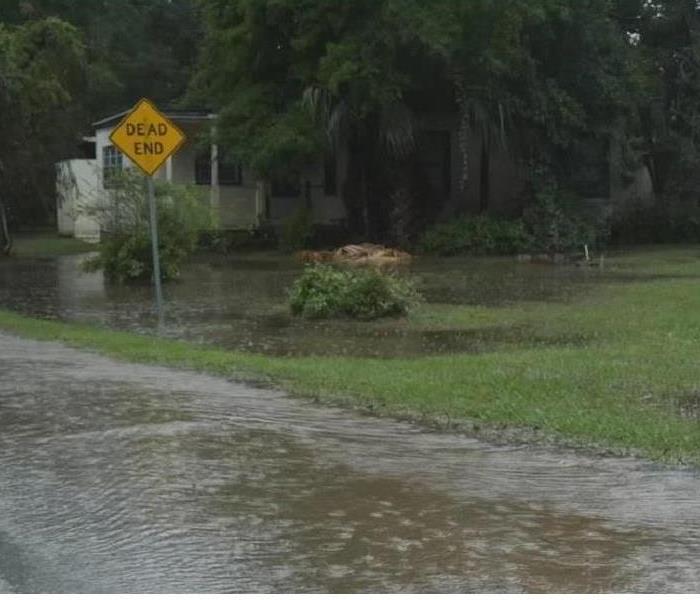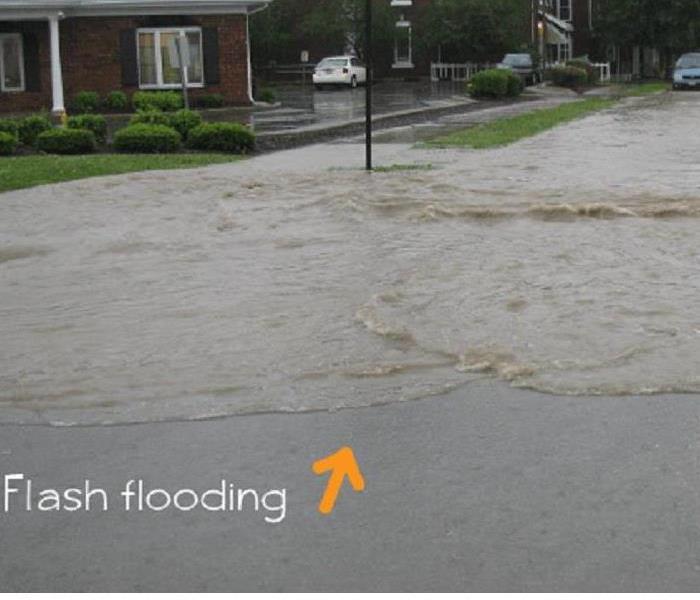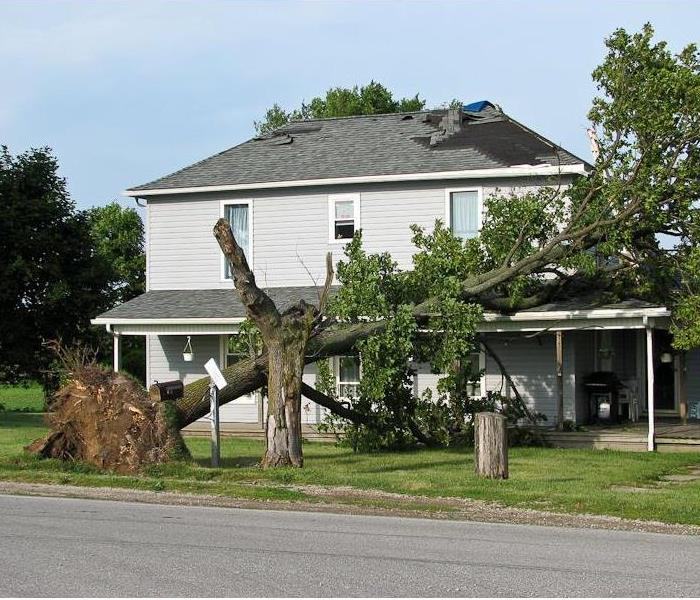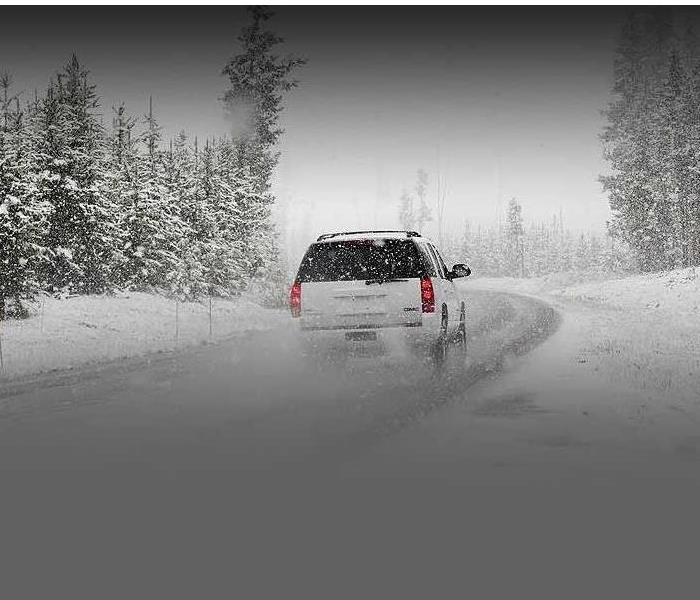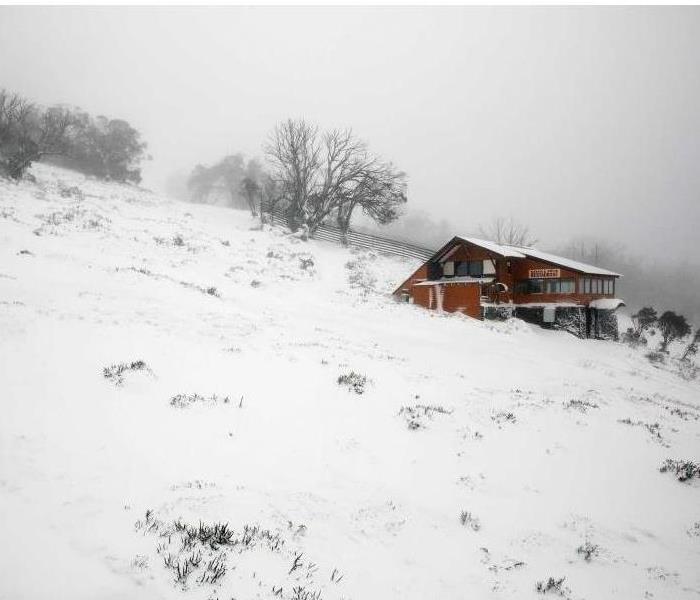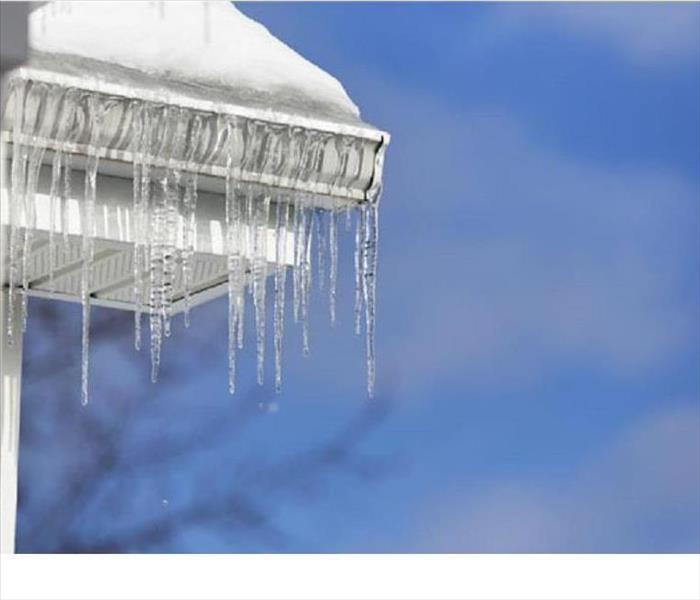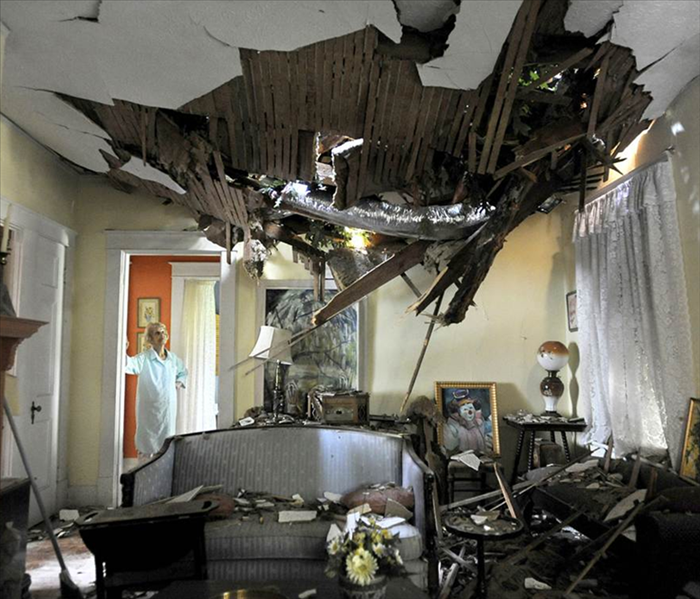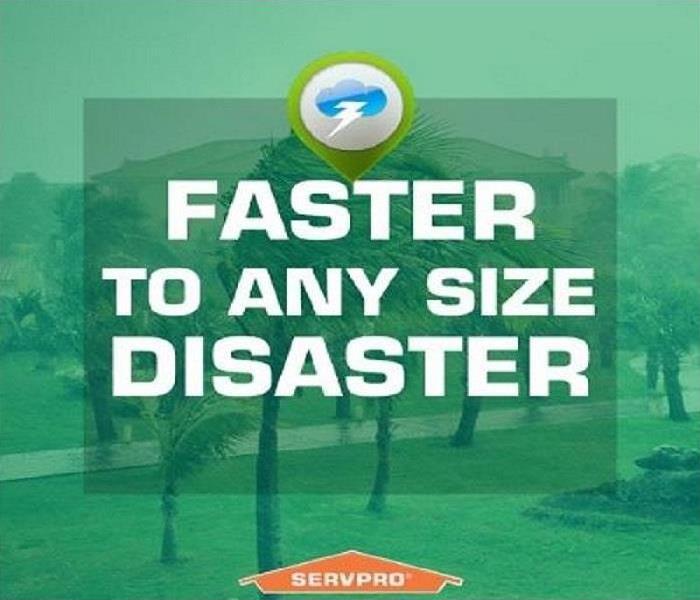Recent Storm Damage Posts
Houston, We Have a Problem.
1/3/2024 (Permalink)
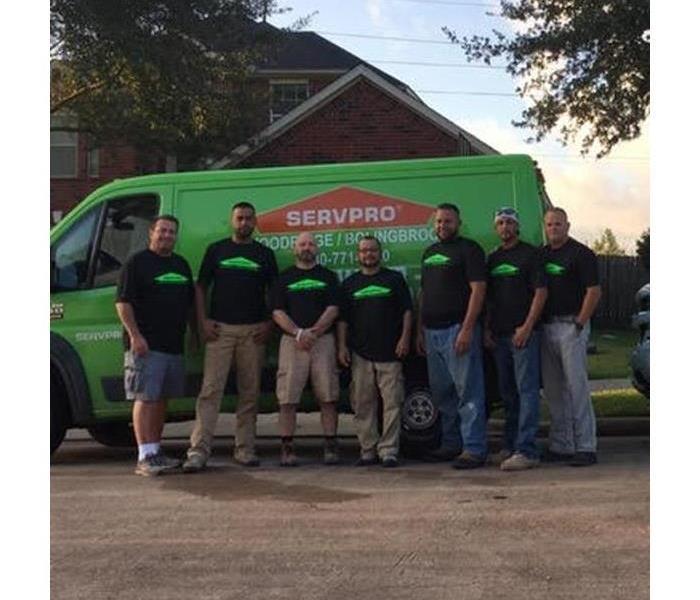 Helping hands
Helping hands
Hurricane Harvey struck the gulf coast of Texas in August of 2017, making it the first major hurricane to hit Texas in almost 20 years. Harvey peaked as a Category 4 hurricane that devastated the Houston area through severe rainfall and high-speed winds, causing catastrophic flooding and damage to over 160,000 homes. This is where SERVPRO stepped in to help.
SERVPRO of Woodridge/Bolingbrook sent crews to Houston for 30 days in the wake of the major storm. Within that time, our crews took on about 50 jobs in the area to assist in extracting water from homes and cleaning up the damage. Along with structurally drying and restoring the affected areas, our team served to help and support customers during their time of need.
Flooding in New York and New Jersey
10/2/2023 (Permalink)
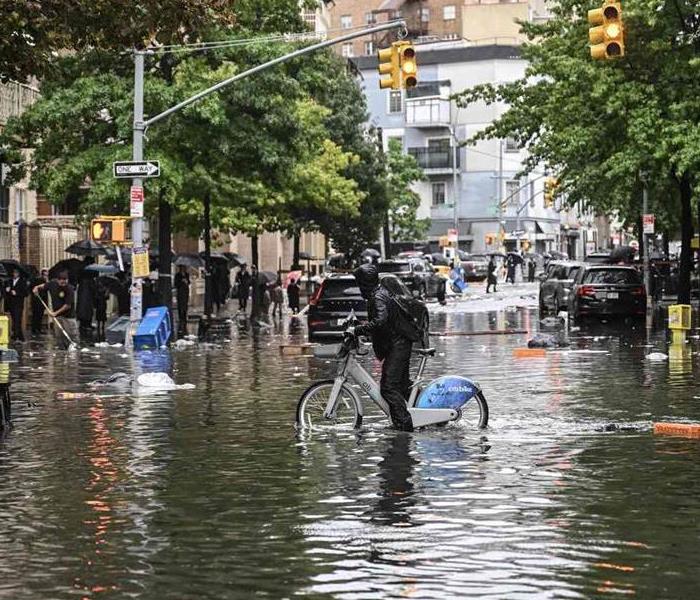 New York City suffered severe flooding over the weekend
New York City suffered severe flooding over the weekend
Severe flooding occurred throughout New York and New Jersey late last week. New York City was hit especially hard, with the downtown streets flooding and mostly all of its public transportation shutting down. Subways and highways were flooded and could not be used. In a bustling place such as New York City, this was a major issue as this prevented people from getting to and from work and school. People who were able to get to work or school before things got bad, did not have a way home. A majority of students take public transportation to and from school. School busses were running but only a small number of kids ride the school bus, most of them being disabled. Areas in and around the city saw anywhere for 4 to 7 inches of rain. JFK airport saw a little over 8 inches of rain which broke the previous record established in 2011 during Hurricane Irene. LaGuardia Airport had to shut down one whole terminal due to severe flooding. Both New York and New Jersey declared a state of emergency and encouraged people to stay inside to avoid the dangerous flood waters and limit the potential for any other possible injuries.
Atlantic Hurricanes
9/8/2022 (Permalink)
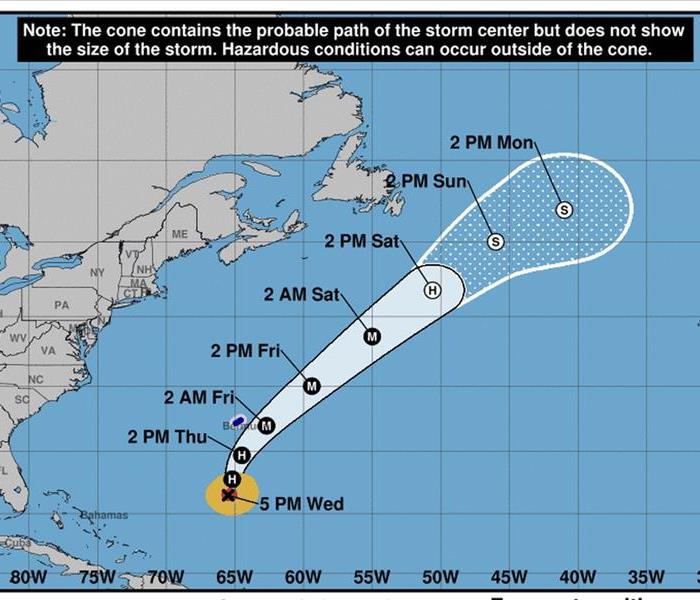 Hurricane Earl's Path
Hurricane Earl's Path
Earl, the second hurricane of the 2022 Atlantic Hurricane Season, has been forecasted to become the first major hurricane of the season. A major hurricane is categorized as a hurricane that has winds of 111 mph or greater. The hurricane is not a threat to the United States, as it is moving eastward in the Atlantic toward Bermuda. The good news is that experts expect the hurricane to miss Bermuda to the southeast, only causing some gusty winds and some rain and avoiding the really dangerous and damaging stuff. It is expected to reach its peak strength sometime this afternoon as it veers off to the northeast. Although the hurricane will not directly affect the United States, the US could potentially see some swells which will cause some very dangerous rip currents. There are currently two hurricanes active in the Atlantic, along with Earl there is Danielle. Danielle isn't as strong as Earl, failing to reach the "major" category. This is the first time since 2020 that two hurricanes have been active at one time in the Atlantic.
Types of Disasters
9/1/2022 (Permalink)
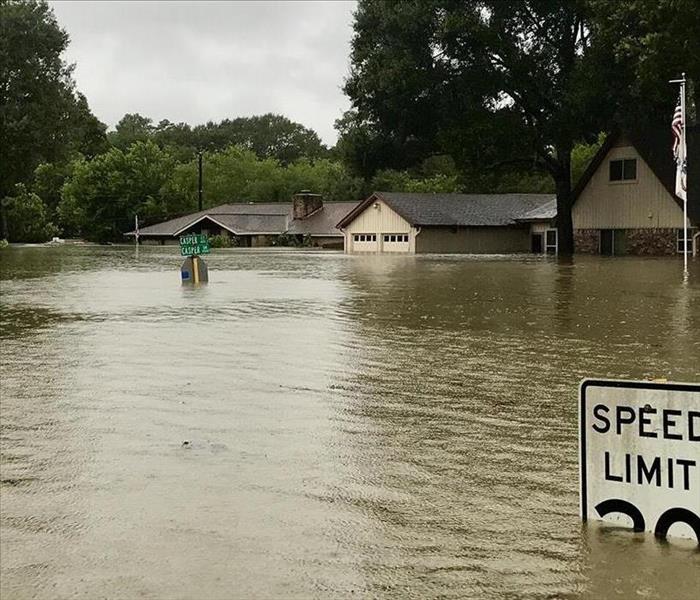 It is important to stay out of the water if at all possible to avoid any unseen hazards.
It is important to stay out of the water if at all possible to avoid any unseen hazards.
September is National Preparedness Month. It is a time used to raise awareness about the importance of being prepared for any type of disaster that could strike at a moments notice. According to the government website Ready.gov, there are over 25 different possible disasters. Some of them include, earthquakes, floods, hurricanes, wild fires and winter storms. Although earthquakes, hurricanes and wild fires are out of the norm in Illinois, the other two, floods and winters storms, are something we know very well. SERVPRO has seen their fair share of both and we never shy away from the challenge. When it comes to these disasters, is it important to have a plan in place before hand. This will allow you to navigate the situation more clearly and not in a panic. Having an emergency kit put together is important as well. The kit should contain the necessities, having it put together before hand allows you to grab it and go in a much more efficient time. Ideally, the kit should contain enough supplies to last you at least one week in the event you are stuck in your home.
April Showers
4/5/2022 (Permalink)
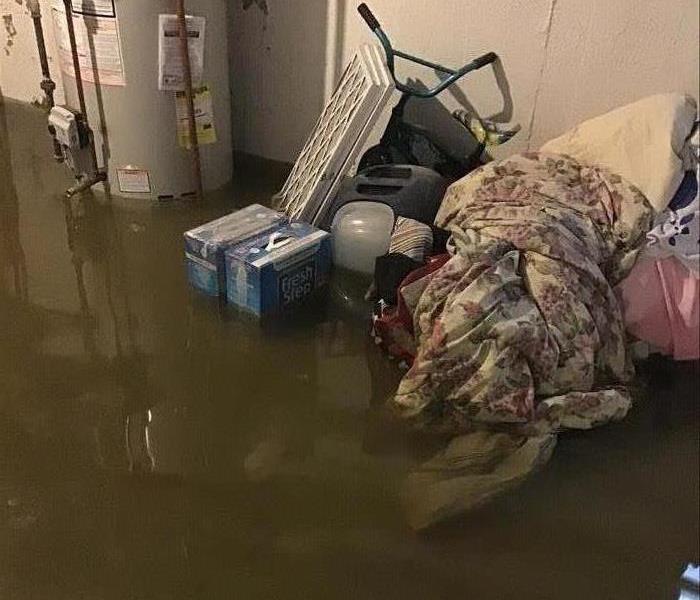 Heavy rainfall left over 6 inches of water in this basement.
Heavy rainfall left over 6 inches of water in this basement.
Torrential rain in the Woodridge, IL area last week caused some major damages for homeowners throughout the town. As you can see in the image below, this homeowner had over 6 inches of water throughout their entire basement. Their sump pump failed to turn on, resulting in the flooding. The homeowner could not get a plumber out there in a reasonable time to replace the sump pump, so SERVPRO put their own pump in the basement to begin the process of removing the water. Once the standing water was removed, SERVPRO then went forward with removing any affected materials in order to initiate the drying process. In hectic times like this, SERVPRO is prepared to deal with any situation that may come up. SERVPRO has the equipment and their technicians have the experience to handle anything that comes their way. As the "April showers" continue to wreak havoc, SERVPRO is here to help.
SERVPRO of Woodridge/Bolingbrook Storm Response
3/7/2022 (Permalink)
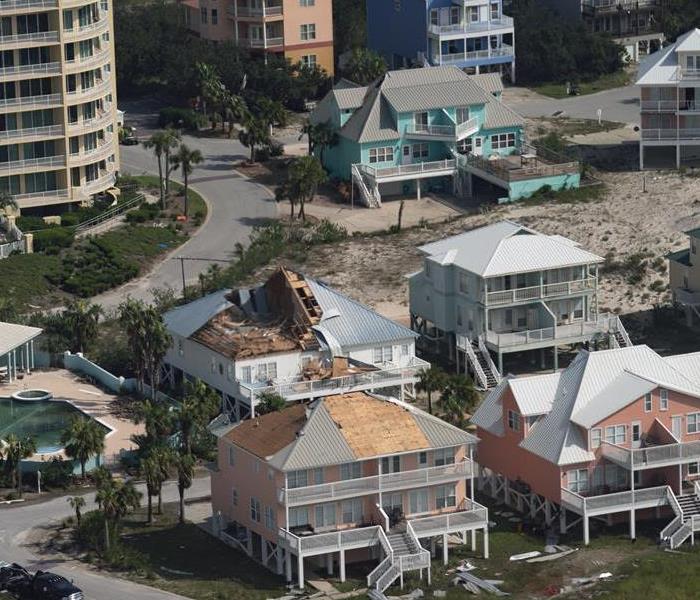 SERVPRO of Woodridge/Bolingbrook responded to Hurricane Sally in Alabama in the fall of 2020.
SERVPRO of Woodridge/Bolingbrook responded to Hurricane Sally in Alabama in the fall of 2020.
SERVPRO of Woodridge/Bolingbrook is no stranger to responding to major storms, from Alabama to New Jersey to right here in Woodridge. SERVPRO of Woodridge/Bolingbrook prides themselves on their ability to take on any storm or flood damage in any situation. The crews are well trained and use their knowledge and abilities to bring your property back to its pre-storm appearance.
Here at SERVPRO of Woodridge/Bolingbrook, we have the resources and equipment to make the process as efficient as possible. With over 350 pieces of equipment, we are more than capable of handling even the greatest storm damage. And to make things even better, if our 350 pieces of equipment are not enough, we have access to equipment from over 1,500 franchises across the country.
Our goal is to respond as quickly as possible when we are called, limiting the damage and your worries. If you have any storm damage or restoration needs, call us today at 630-771-1720.
Tornado Season
3/1/2022 (Permalink)
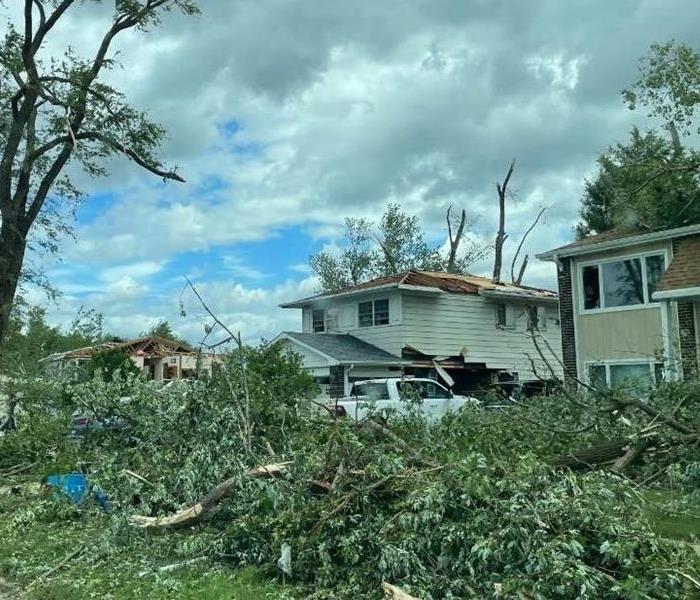 An EF-3 tornado tore through Woodridge last June, damaging many homes along its path.
An EF-3 tornado tore through Woodridge last June, damaging many homes along its path.
As we flip the calendar to March, this usually means two things, spring is coming and so is tornado season. In the Midwest, tornado season typically runs from March to early June. Just last year, we had a tornado hit in Woodridge only a couple miles from where our office is located. When something like that happens right in your backyard it makes you realize how important it is to be prepared for the situation. Here are some tips to help you prepare in the event of a tornado;
It is important to identify the safest location in your house, this is usually a basement, storm cellar, or an interior room on the lowest level of the home with no windows.
Putting together an emergency kit will go a long way in helping you through the event. The kit should contain things such as food, water, flashlights, batteries, and any medications your family may need.
Ensure your family knows how to get in touch with each other in the event someone gets separated. Develop a plan, whether that be meeting at a specific location, contacting a neighbor, etc. Relying on a phone call is risky due to the volume of calls and the possibility of the lines getting jammed.
Being prepared will go a long way in providing you and your family with safety and security in the event of a tornado.
Winter Storm Preparedness
2/1/2022 (Permalink)
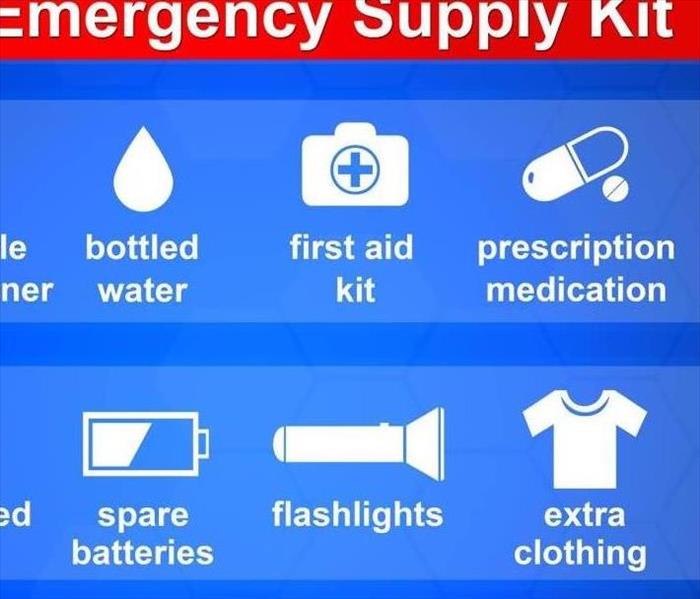 Having these items can in a Emergency Supply Kit can go a long way in ensuring your safety.
Having these items can in a Emergency Supply Kit can go a long way in ensuring your safety.
In the event of a severe winter storm, it is important that you are prepared. Winter storms can make travel extremely difficult if not impossible, so it is imperative that you take necessary steps to ensure you have what you need to get through it safely. Below are some steps you should take to enhance your preparedness:
1. Stock your food pantry. Try to include non-perishable items so they do not spoil in the event you lose power. You should aim to have enough food for 3 days.
2. Buy bottled water. Bottled water is important to have incase your pipes freeze and you can not access tap water. The water can also be used for washing dishes or hygiene purposes.
3. Fill your prescriptions. Have at least 3 days worth of any prescription medication you may need.
4. Build an emergency kit. Your kit should include things such as a first aid kit, a battery or hand crank operated radio, flashlights, extra batteries, blankets and matches.
Northeastern Storms
9/21/2021 (Permalink)
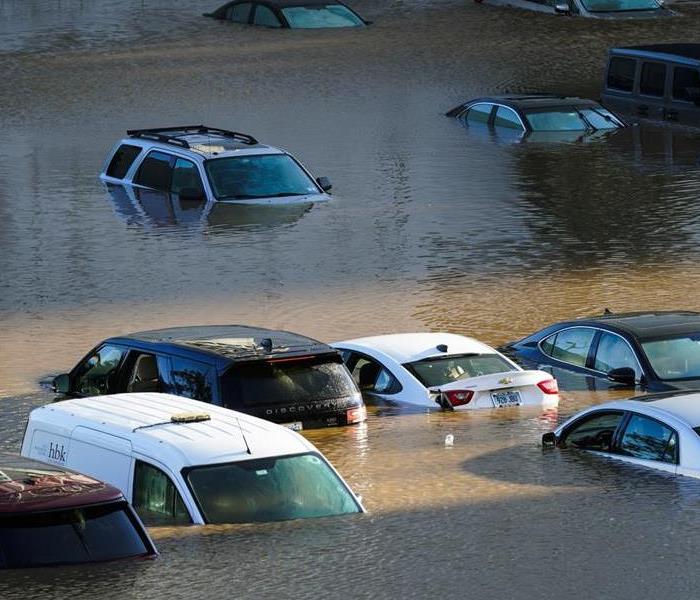 Dozens of cars became trapped in the flood.
Dozens of cars became trapped in the flood.
Hurricane Ida made its mark in more place than one. In addition to tearing through the Gulf Coast, its aftermath was felt all the way up in the northeastern part of the United States. More than 7 inches of rain fell in a short period of time, something they hade never seen before. The NWS issued the first ever flash flood warning for New York City as a result of this. This extreme flash flooding came as a surprise, allowing no time for the people to prepare. People became trapped in their cars and homes with nowhere to go. Over 40 people have been reported dead as a result of the flooding, a devastating statistic. At least six tornadoes were reported across Maryland, New Jersey, Pennsylvania and Virginia in addition to the extreme flooding.
Winter Storm Hits Texas
4/6/2021 (Permalink)
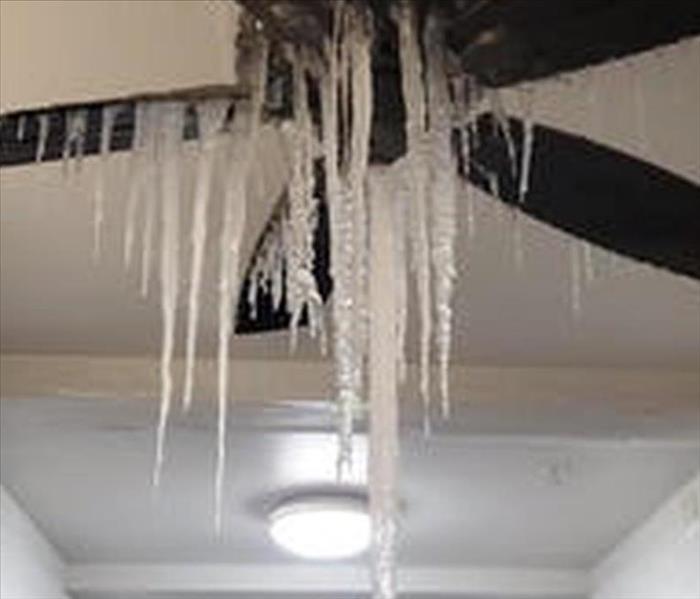 Icicles hang from the ceiling fan after multiple pipes burst.
Icicles hang from the ceiling fan after multiple pipes burst.
Last month most of the southern United States was effected by an unusual winter storm. The state of Texas was hit especially hard with pipe breaks and massive power outages taking place throughout the state. With so many people experiencing flooding and water damage in their homes, they were in desperate need of help.
This is where SERVPRO stepped in. SERVPRO activated hundreds of storm teams to go down there and help with the recovery efforts. SERVPRO franchises from all over the country responded to the call, packed up and headed south by the truckload.
As you can see in the image, there was water coming from every level of this homes. The freezing temperatures caused a pipe on the upper level to burst and leak through the ceiling and into the ceiling fan.
Disaster Clean up Specialists
2/11/2021 (Permalink)
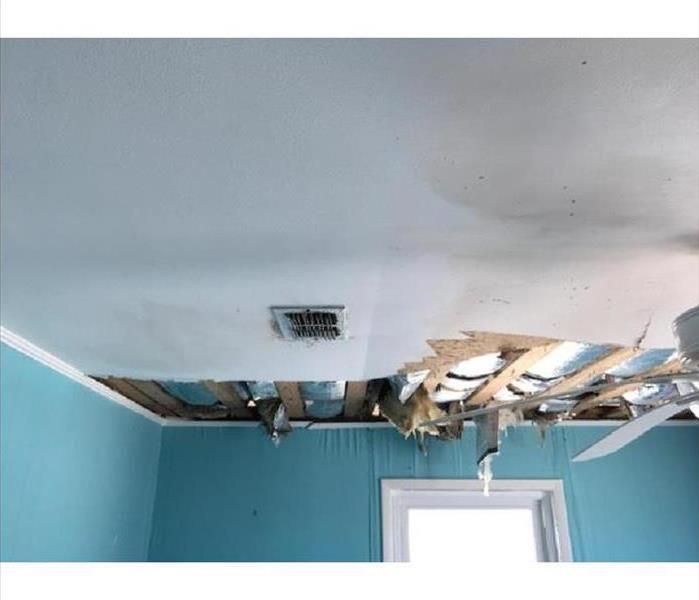 Nearly Gone with the Wind
Nearly Gone with the Wind
Your home should be your safe place. The place where life happens. When a storm, flood or fire strikes, your life can be turned upside down. SERVPRO is here to get life your back to normal, you can take on the repairs yourself, or look for a reliable disaster response company. Both options can seem overwhelming.
With more than 15 years experience, SERVPRO of Woodridge/Bolingbrook will restore your home quickly and seamlessly. Satisfaction is guaranteed.
Our comprehensive disaster response services are available 24/7 — for fire damage restoration, storm damage repair, and flood restoration.
A team of SERVPRO trained team of caring professionals will take care of everything from communicating with your insurance adjuster to removing mold and replacing damaged baseboards.
Our goal in all cases is to make it "Like it never even happened."
Frigid Temperatures Feb 2021
2/3/2021 (Permalink)
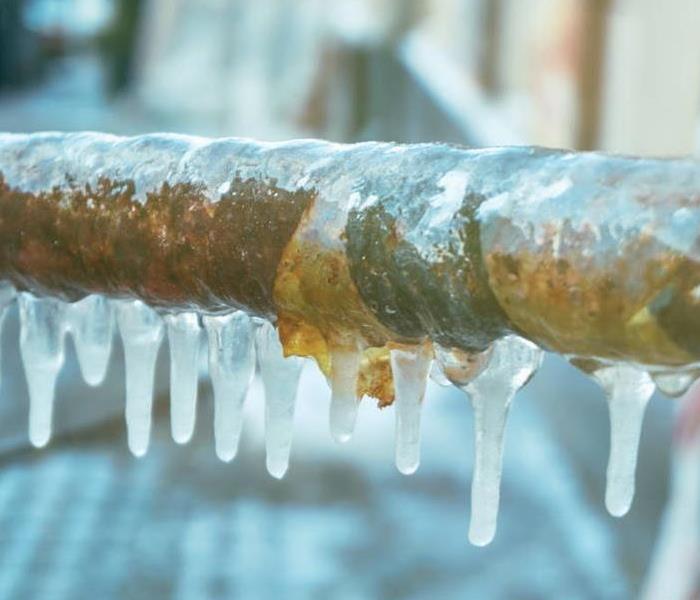 Don't let your pipes freeze this winter
Don't let your pipes freeze this winter
February of 2021 has not skipped a beat when it comes to the winter weather. Starting off the month with a snowstorm that dumped 9 inches on us in one night. Week two is calling for low temperatures that we haven't seen in a few years.
What this means for you?
When temperatures drop this rapidly for the first time of the season you should always be on the lookout for pipe breaks. Since water expands when it freezes this can lead to cracks or even a full burst of a water pipe in your home.
Ways to prevent this:
1. Monitor all pipes in unheated areas within your home.
2. Keep garage door shut at all times
3. Let faucets drip so there isn't water build ups
4. Open cabinets to regulate temperatures
5. Keep a consistent temperature throughout your home
Worst Winter Storms in Chicagoland History
2/3/2021 (Permalink)
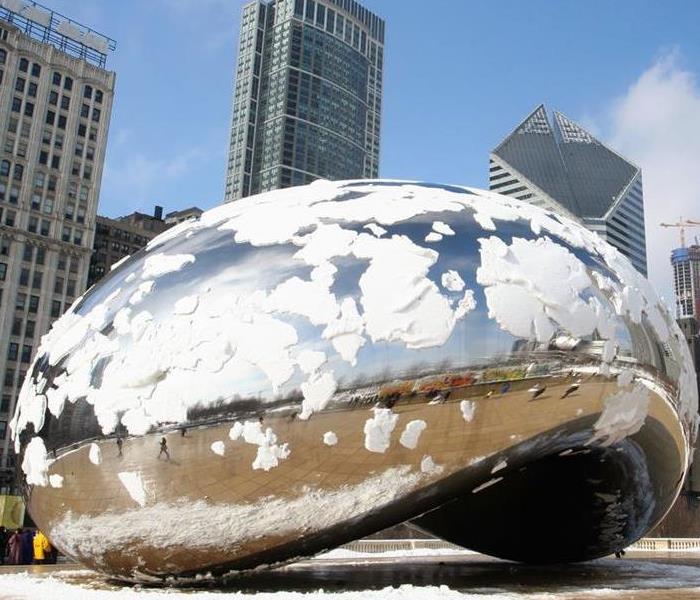 Downtown Chicago with snowfall
Downtown Chicago with snowfall
In honor of winter storm season let's take a look back at some of the worst snow/winter storms that have hit the Chicagoland Area.
January 2011
In January of 2011 Chicago was hit with 21.2 inches of snow over a 3 day span. Along with the snow there was also 35mph winds, and even a tornado was reported south of the storm! This storm would go on to be remembered as the "Groundhog Day Blizzard" because it stretched from Jan. 31st through Feb 2nd.
January 1979
In some parts of Chicago snow piled up almost 29 inches with at least 23 inches of recorded snow fall. This storm also "plowed the way" for Chicago's first woman to become Mayor after Michael Bilandic was fired because he didn't get the plows out fast enough.
Chiberia 2019
In January of 2019 a polar vortex made it's way through Chicago, which at the time of the vortex made Chicago colder than it was in Antarctica. With the wind chill the tempetures got down to about -50 degrees Fahrenheit.
Winter is coming.
12/3/2020 (Permalink)
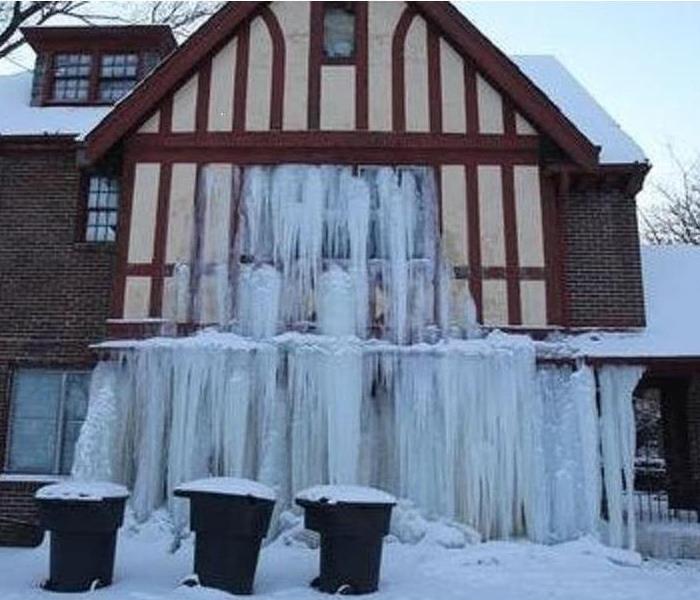 Winter is coming.
Winter is coming.
Winter is coming.
Why Pipe Freezing is a Problem
Water has a unique property in that it expands as it freezes. This expansion puts tremendous pressure on whatever is containing it, including metal or plastic pipes. No matter the strength of a container, expanding water can cause pipes to break.
Pipes that freeze most frequently are:
- Pipes that are exposed to severe cold, like outdoor hose bibs, swimming pool supply lines, and water sprinkler lines.
- Water supply pipes in unheated interior areas like basements and crawl spaces, attics, garages, or kitchen cabinets.
- Pipes that run against exterior walls that have little or no insulation.
How to Protect Pipes From Freezing
Before the onset of cold weather, protect your pipes from freezing by following these recommendations:
- Drain water from swimming pool and water sprinkler supply lines following manufacturer's or installer's directions. Do not put antifreeze in these lines unless directed. Antifreeze is environmentally harmful, and is dangerous to humans, pets, wildlife, and landscaping.
- Remove, drain, and store hoses used outdoors. Close inside valves supplying outdoor hose bibs. Open the outside hose bibs to allow water to drain. Keep the outside valve open so that any water remaining in the pipe can expand without causing the pipe to break.
- Add insulation to attics, basements and crawl spaces. Insulation will maintain higher temperatures in these areas.
- Check around the home for other areas where water supply lines are located in unheated areas. Look in the garage, and under kitchen and bathroom cabinets. Both hot and cold water pipes in these areas should be insulated.
- Consider installing specific products made to insulate water pipes like a "pipe sleeve" or installing UL-listed "heat tape," "heat cable," or similar materials on exposed water pipes. Newspaper can provide some degree of insulation and protection to exposed pipes – even ¼” of newspaper can provide significant protection in areas that usually do not have frequent or prolonged temperatures below freezing.
- Consider relocating exposed pipes to provide increased protection from freezing.
How to Prevent Frozen Pipes
- Keep garage doors closed if there are water supply lines in the garage.
- Open kitchen and bathroom cabinet doors to allow warmer air to circulate around the plumbing. Be sure to move any harmful cleaners and household chemicals up out of the reach of children.
- When the weather is very cold outside, let the cold water drip from the faucet served by exposed pipes. Running water through the pipe - even at a trickle - helps prevent pipes from freezing.
- If you will be going away during cold weather, leave the heat on in your home, set to a temperature no lower than 55° F.
SERVPRO of Woodridge/Bolingbrook is here to help when you need us. Please call any time 630-771-1720
Are you ready?
12/2/2020 (Permalink)
Winter weather in Illinois can be pretty unpredictable. Are you prepared to weather the storm?
Here at SERVPRO of Woodridge/Bolingbrook we are always prepared to help.
Should you fall victim to frozen pipes flood or storm damage, don't hesitate to call our team of professionals at (630)771-1720. We offer 24/7 emergency response to help mitigate the damage caused by water intrusion into your home. Our team of professionals can provide on site estimates or work directly with any insurance carrier to ensure that your home is restored to its preloss condition.
Our goal is to minimize the damage and frustration of storm loss to your property.
We hope to make it "Like it never even happened."
St. Louis Storm Calls in 15 Frranchises
9/4/2020 (Permalink)
 St. Louis's Gateway Arch
St. Louis's Gateway Arch
SERVPRO Woodridge/Bolingbrook Takes on St. Louis
After a terrible Storm in the Midwest, the local SERVPRO franchisees were overwhelmed and needed help. SERVPRO of Woodridge/Bolingbrook along with 14 other franchisees made their way to help.
Our franchise had the task of tackling 14 different jobs in 14 days.
A crew of just 5 grew to 7 when more jobs flooded in. Long, hard hours were no task for the Woodridge/Bolingbrook crew. Every job was completed no matter how hard or tough it was.
SERVPRO of Woodridge/Bolingbrook was very happy to help during this time of need. It was a very good team building experience, especially for the members who had no storm experience prior to this event.
SERVPRO Woodridge/Bolingbrook
(630) 771-1720
Ready or Not
4/6/2020 (Permalink)
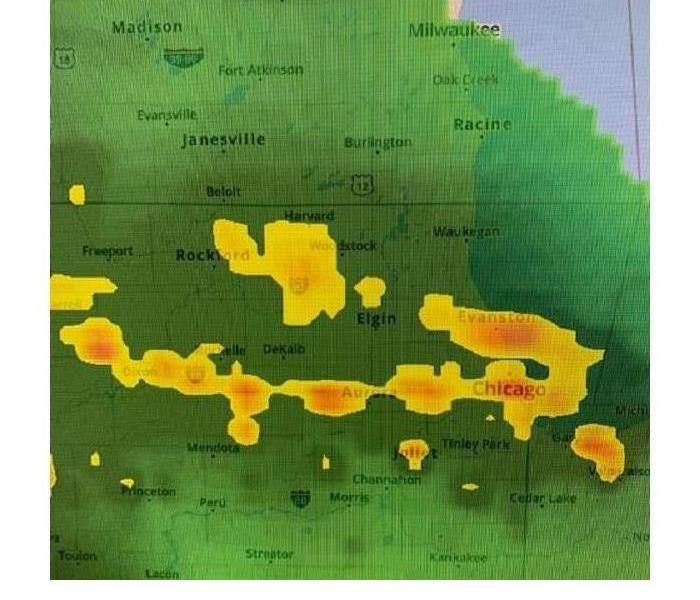 Get your umbrellas here comes the rain
Get your umbrellas here comes the rain
Summer weather in Illinois can be pretty unpredictable. Today's forecast calls for heavy wind and rains. Are you prepared to weather the storm?
Here at SERVPRO of Woodridge/Bolingbrook we are always prepared to help.
Should you fall victim to flood or storm damage, don't hesitate to call our team of professionals at (630)771-1720. We offer 24/7 emergency response to help mitigate the damage caused by water intrusion into your home. Our team of professionals can provide on site estimates or work directly with any insurance carrier to ensure that your home is restored to its preloss condition.
Our goal is to minimize the damage and frustration of storm loss to your property.
We hope to make it "Like it never even happened."
Storm Response Professionals
2/3/2020 (Permalink)
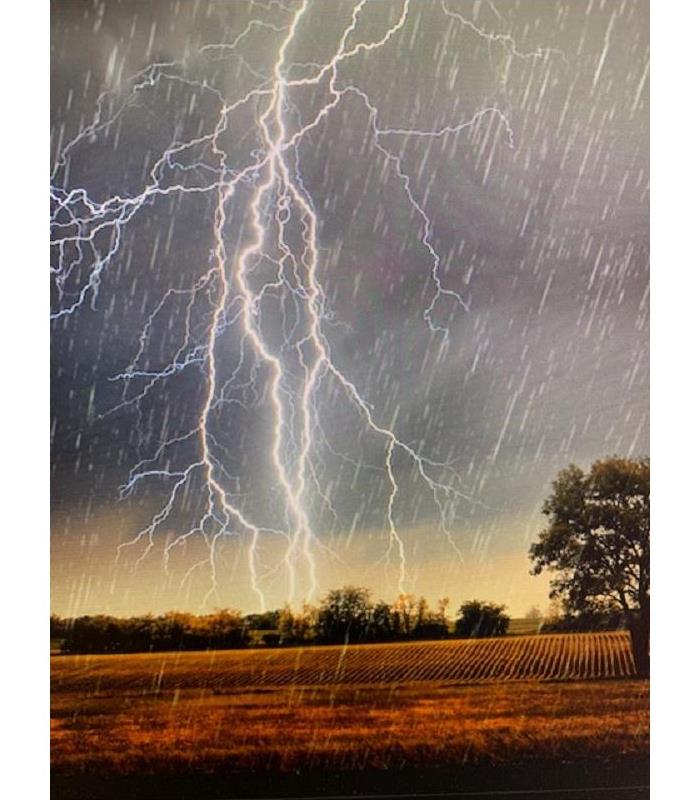 Lightning Fast Response!
Lightning Fast Response!
When your property is overcome with water call on the professionals at SERVPRO of Woodridge/Bolingbrook to help make it “Like it never even happened.” Our highly trained technicians are ready 24 hours a day, 7 days a week to respond to your water restoration needs. Whether it is your residential property or your commercial business that you need back up and running SERVPRO of Woodridge/Bolingbrook has the advanced inspection and drying equipment to meet your water mitigation needs. Our crew chief will monitor and document the drying process daily to ensure your property is restored properly and quickly with the least amount of secondary damage. SERVPRO of Woodridge/Bolingbrrok works with all insurance companies to make the process stress free for the property owner.
Ready to Respond in Your Time of Need
2/3/2020 (Permalink)
SERVPRO of Woodridge/Bolingbrook specializes in storm and flood damage restoration. Our crews are highly trained and we use specialized equipment to restore your property to its pre-storm condition.
Faster Response
Since we are locally owned and operated, we are able to respond quicker with the right resources, which is extremely important. A fast response lessens the damage, limits further damage, and reduces the restoration cost.
Resources to Handle Floods and Storms
When storms hit Woodridge/Bolingbrook, we can scale our resources to handle a large storm or flooding disaster. We can access equipment and personnel from a network of 1,700 Franchises across the country and elite Disaster Recovery Teams that are strategically located throughout the United States.
Have Storm or Flood Damage? Call Us Today 630-771-1720
Don't Get Caught in the Storm.
1/22/2020 (Permalink)
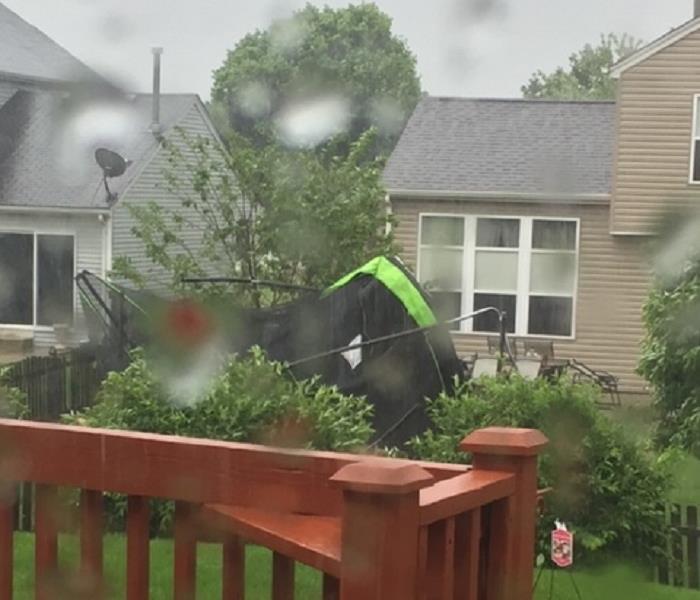 Nasty storm in Will County.
Nasty storm in Will County.
SERVPRO of Woodridge/Bolingbrook is available 24 hours a day for water emergencies, large or small. When you are dealing with water damage, immediate action is crucial. A delay of just a few hours can greatly increase the severity of the water damage.
We Answer the Phone Ready to Help.
Call Today – (630) 771-1720.
We understand that when you call us, you may be feeling confused, stressed, and vulnerable. You need an expert to guide you through this crisis. SERVPRO of Woodridge/Bolingbrook has the specific water damage training and experience to help you through this tough time. We specialize in water damage restoration—in fact, it's the cornerstone of our business.
What to Expect:
When you call, we will ask several questions regarding your water damage emergency. These questions will help us determine what equipment and resources to bring, including how many trained SERVPRO Professionals may be needed.
Our SERVPRO Representative will ask several questions:
• Your name and contact information
• Your insurance information (if applicable)
• The street address of the water-damaged home or business
• When did the flooding or water damage occur?
• What caused the water damage (if known)?
• Is there electricity available (on-site)?
About SERVPRO of Woodridge/Bolingbrook:
SERVPRO specializes in the cleanup and restoration of residential and commercial property after a fire, smoke or water damage event. Our staff is highly trained in property damage restoration. From initial and ongoing training at SERVPRO’s corporate training facility to regular IICRC-industry certification, rest assured our staff is equipped with the knowledge to restore your property.
Gonna Be a Wet One
8/20/2019 (Permalink)
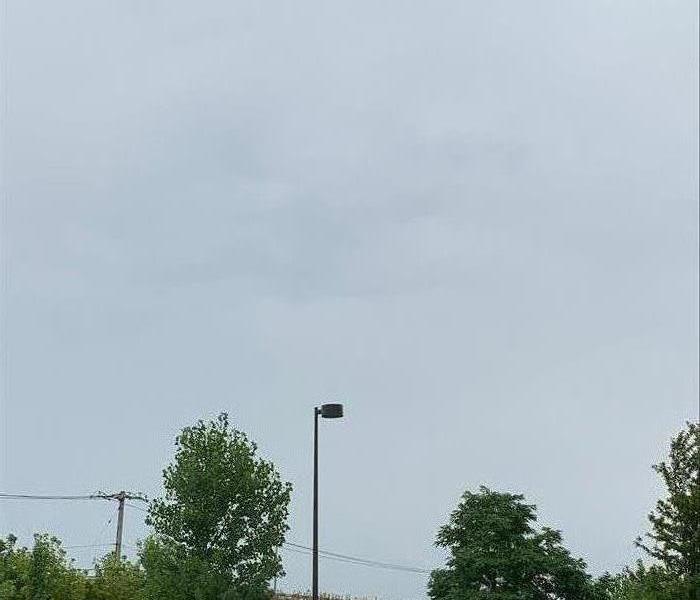 Stormy Conditions
Stormy Conditions
SERVPRO of Woodridge/Bolingbrook specializes in storm and flood damage restoration. Our crews are highly trained and we use specialized equipment to restore your property to its pre-storm condition.
reduces the restoration cost.
Resources to Handle Floods and Storms
When storms hit Chicagoland, we can scale our resources to handle a large storm or flooding disaster. We can access equipment and personnel from a network of 1,700 Franchises across the country and elite Disaster Recovery Teams that are strategically located throughout the United States.
Faster Response
Since we are locally owned and operated, we are able to respond quicker with the right resources, which is extremely important. A fast response lessens the damage, limits further damage, and reduces the restoration cost.
Have Water Damage? Call Us Today 630-771-1720.
Weather the storm with SERVPRO.
8/12/2019 (Permalink)
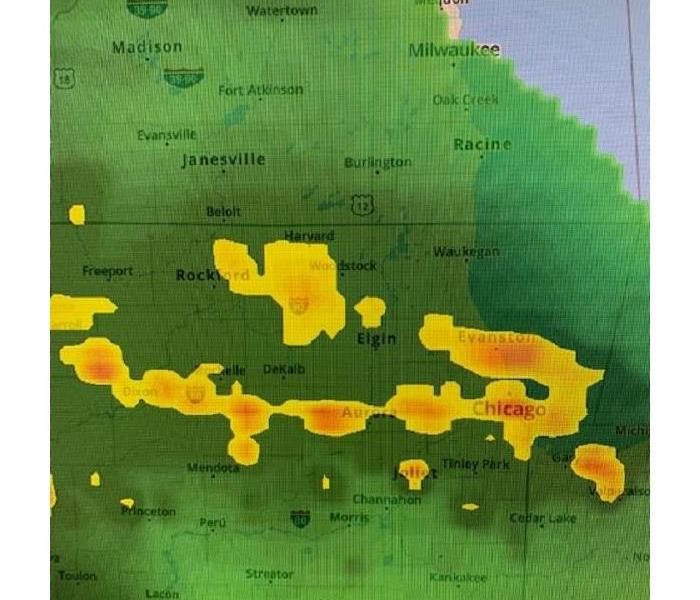 Are you Prepared?
Are you Prepared?
Summer weather in Illinois can be pretty unpredictable. Today's forecast calls for heavy wind and rains. Are you prepared to weather the storm?
Here at SERVPRO of Woodridge/Bolingbrook we are always prepared to help.
Should you fall victim to flood or storm damage, don't hesitate to call our team of professionals at (630)771-1720. We offer 24/7 emergency response to help mitigate the damage caused by water intrusion into your home. Our team of professionals can provide on site estimates or work directly with any insurance carrier to ensure that your home is restored to its preloss condition.
Our goal is to minimize the damage and frustration of storm loss to your property.
We hope to make it "Like it never even happened."
Catastrophic Loss
8/12/2019 (Permalink)
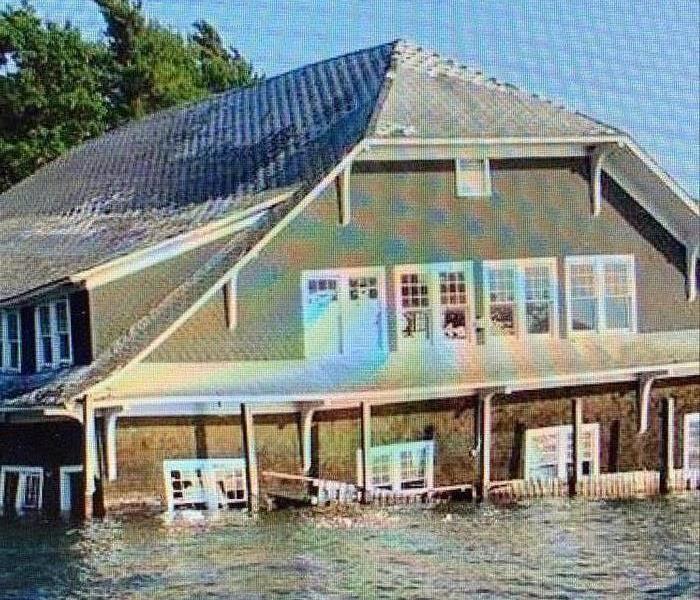 Don't Get Washed Away
Don't Get Washed Away
Illinois is fortunate enough to experience all four seasons.
Some of our seasons are a little bit milder than others. Summertime generally seems to bring harsher weather and storms.
When disasters such as roof leaks and flooded basements should occur due to storms make sure to call the team that has 13 years of experience helping customers walk through confusion and frustration.
We are here to help make it “Like it never even happened.”
SERVPRO of Woodridge/Bolingbrook is here 24/7 365 to help you, call us at 630-771-1720.
-50 Degree weather in our location
3/27/2019 (Permalink)
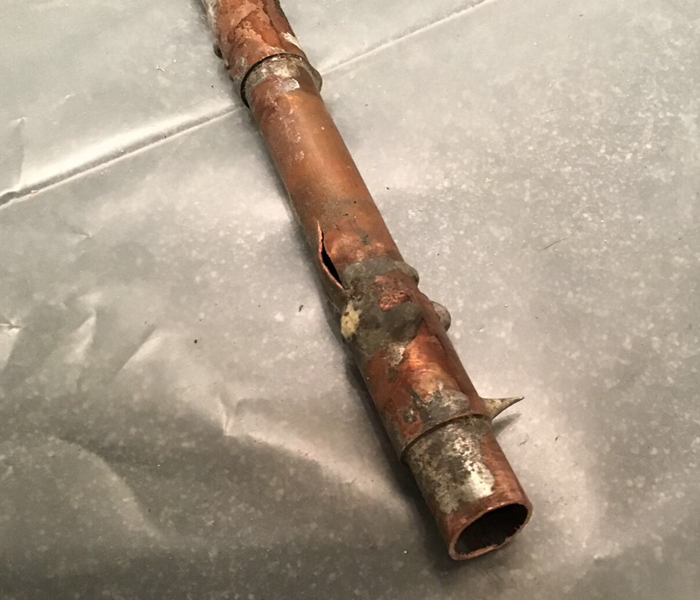 What a pipe break will look like when it was frozen then burst.
What a pipe break will look like when it was frozen then burst.
On January 30th 2019, Chicago land area hit a record of the coldest in Chicago history. Temperatures reached a stunning Negative 50 degrees with the windchill. Even going outside for longer than 5 minutes can cause a problem with health and safety. With this type of weather can also cause problems with homes and businesses. Pipes can begin to freeze and cause damage to the home. This became true when ,3 days after the historical weather, temperatures hit from -50c to 50f. This jump in the weather will cause the pipes frozen on the 30th to defrost and burst. This became true when more and more houses began to call in needing SERVPRO teams to come in and fix the problem. Houses were seeing up to 2-5 pipe breaks in the house. SERVPRO teams are always ready for what the temperature will bring us.
Aftermath of Hurricane Michael.
1/21/2019 (Permalink)
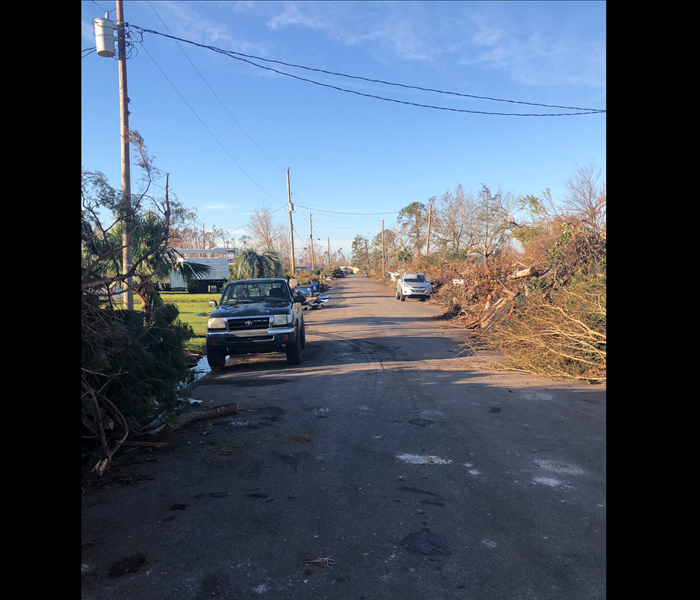 The damage trees and items all left on curb side in Florida.
The damage trees and items all left on curb side in Florida.
In October 2018 Hurricane Michael made hit land in the Florida Panhandle. The winds got up to 155 mph, the damage done to this city was devastating. People were with damage or even without homes. Trees, homes, vehicles, anything within the area affected was horribly damaged. Many people and companies from all across america came to help the good people of Florida. Everywhere you looked on the streets were people working. Red cross volunteers giving food and water for people in need. Linemen working to get power back in peoples homes, Tree service trucks removed fallen or damaged trees. Plus many restoration teams from across the country working their hardest to get Florida back on their feet. Many SERVPROs where helping everyone in need. Every street you turned was fallen trees and damaged items on the curb waiting for trash pick up. SERVPROs across the country came together to help in a time of need. SERVPRO is always happy to make a change in this World.
Flooding in Maryland 2018
1/21/2019 (Permalink)
 The city of Elliott, affected by the flood.
The city of Elliott, affected by the flood.
In Elliott city, which is 30 minutes from Baltimore, in the state of Maryland. May 2018, the city was hit by a storm that brought over 8 inches of rain within a 2 hour span. Streets were like rivers. The main street of Elliott vanished from the amount of rain given. SERVPRO was quick on the scene. Removing wet drywall and items that were no longer savable. People claimed that this was an "1,000 year storm". Basements of peoples homes were filled with water and left many losing personal belongings. SERVPRO was their to help people in need. Preventing the risk of mold in peoples basements and starting the drying process to many homes. The risk of more floods in the area is big. But SERVPRO will always be there when the great people of Maryland need help.
Demolished Home in Lynn Haven, FL
1/9/2019 (Permalink)
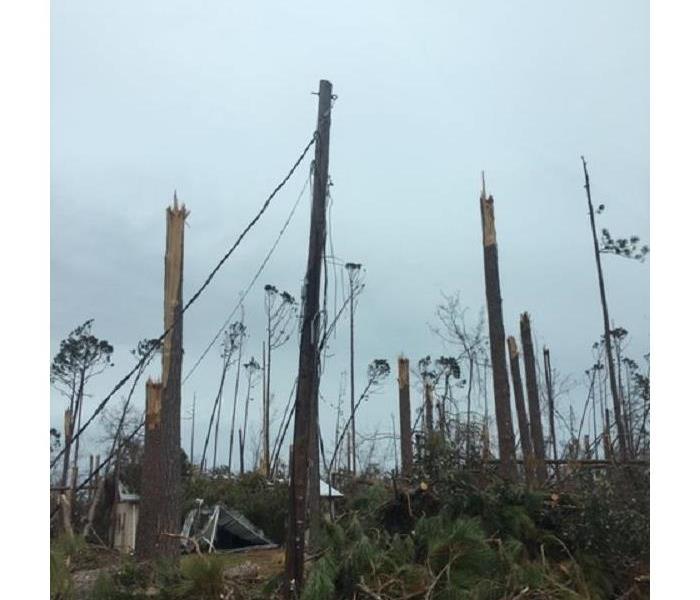 Devastating Storm Winds
Devastating Storm Winds
Hurricane Michael was the 3rd most intense Atlantic hurricane to make landfall in the contiguous United States in terms of pressure, behind the 1935 Labor Day hurricane and Hurricane Camille of 1969.
Estimated damages exceed $15 billion.
Many homes such as the one depicted, were completely demolished by the intense winds and debris.
Scenes like this were far too common for our SERVPRO Catastrophe Responders who did their very best to ease the trauma for the local residents.
Hurricane Michael resulted in 136,873 insurance claims with projected insurance losses at nearly $5 billion.
The road to recovery for the Florida Pan Handle will be a long one, we only hope that the efforts of SERVPRO continue to assist in the redevelopment of this little piece of paradise.
Storm Flooding
5/21/2018 (Permalink)
In our neck of the woods we are lucky enough to get all the seasons. Some of our seasons are a little bit milder than others, this time of year always seems to bring harsher weather and storms. If disasters such as roof leaks and flooded basements should occur due to storms make sure to call the team that has 11 years of experience helping customers walk through confusion and frustration. We are here to help make it “Like it never even happened.” SERVPRO of Woodridge/Bolingbrook is here 24/7 365 to help you, call us at 630-771-1720.
Flash Flooding Woodridge, Bolingbrook or Darien IL?
5/21/2018 (Permalink)
Did you know that it can take as little as 6 inches of moving water to knock you down? That may not seem like much, but water can quickly cause damage and create chaos. If water damage strikes your home or office are affected by rain water from a roof leak, flooded basement, water coming in under the door or maybe water coming in through windows, we are ready! SERVPRO of Woodridge/Bolingbrook has been serving our communities for 11 years and will help make it “Like it never even happened.” We are ready 24/7, 365, if disaster should strike, call us at 630-771-1720.
Thunderstorms-Be Prepared
5/14/2018 (Permalink)
As we sit here looking at the dark clouds billowing over-head we remember it's springtime. In our area it can get warm and thunderstorm’s are something to watch for, here are some tips, to prepare:
To prepare for a thunderstorm, you should do the following:
- To begin preparing, you should build an emergency kit and make a family communications plan.
- Remove dead or rotting trees and branches that could fall and cause injury or damage during a severe thunderstorm.
- Postpone outdoor activities.
- Secure outdoor objects that could blow away or cause damage.
- Get inside a home, building, or hard top automobile (not a convertible). Although you may be injured if lightning strikes your car, you are much safer inside a vehicle than outside.
- Remember, rubber-soled shoes and rubber tires provide NO protection from lightning. However, the steel frame of a hard-topped vehicle provides increased protection if you are not touching metal.
- Shutter windows and secure outside doors. If shutters are not available, close window blinds, shades or curtains.
- Unplug any electronic equipment well before the storm arrives.
As always call us if you need us-we are here 24/7 365 days a year.
630-771-1720
SERVPRO of Woodridge/Bolingbrook Technicians Handle ALL Aspects of Flood Damage Remediation After a Storm
4/16/2018 (Permalink)
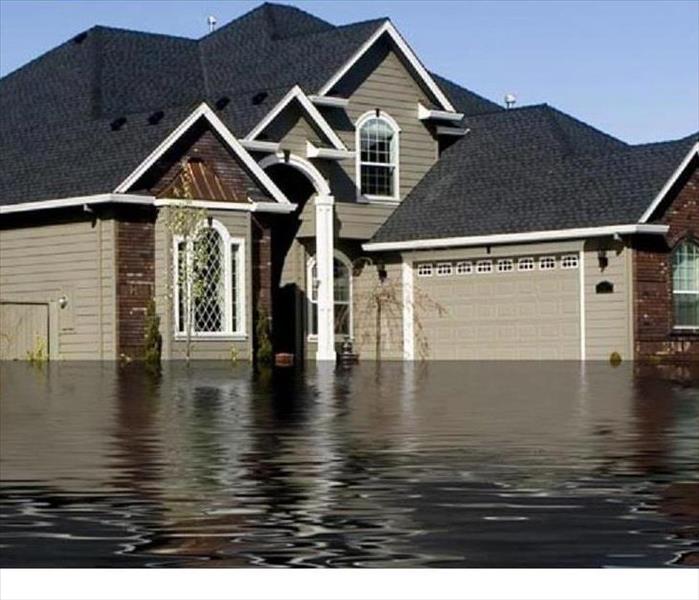
We can never really comprehend the volume of water that is shed from the structures we inhabit until storm damage opens a portion of it to the elements. This type of catastrophe must have a swift, professional response. Hiring a company like SERVPRO that specializes in flood damage and overall disaster remediation is the key to a successful outcome.
Here is a typical storm damage scenario: torrential rains and high winds buffet your home for hours. Nearby tree limbs fall, break windows and cause a corner of the roof to collapse. The breach allows water to rush in through your attic and to the floors below, leaving you with flood damage throughout your Bolingbrook home. As the storm begins to weaken, you realize the safety of your family and the structure of your house require a professional response. Leaving even a portion of your home open to the elements risks more water damage, invasion by pests or unauthorized personnel.
SERVPRO can meet your immediate need to temporarily secure and protect the storm damaged structure, and prevent further damage or unauthorized entry with board-up and roof tarping services. Then the process of mitigating and remediating the interior can begin.
Expect the SERVPRO team to take the time to create a firm plan outlining all the jobs that must be completed to prepare your home for re-construction. Standing water on every level of your home must be pumped out or extracted with powerful vacuums. The majority of the water collects in the basement or lowest level, so immediate attention focuses there, but SERVPRO's properly prepared and trained technicians examine every inch of the dwelling for flood damage.
Following the removal of the water, SERVPRO's certified workers take moisture measurements of structures, air, and possessions as a post-disaster baseline. Drying goals shortly emerge from their skilled computations, and the recovery spotlight now shines on achieving appropriate moisture levels to minimize permanent damage to wood, metal, and fibers, among other things. Commercial air movers and low grain refrigerant dehumidifiers are precisely placed where needed to dry out the structure, flooring, floor coverings, walls, ceilings, and belongings.
Contact SERVPRO of Woodridge/Bolingbrook for your flood damage needs. Hiring a competent and well-seasoned remediation team is only a call to (630)771-1720 away.
Safety Tips Before, During and After a Storm
3/26/2018 (Permalink)
Severe season is upon which means it’s time to buckle down and learn exactly what to do in an extreme weather situation. Follow these tips to stay safe!
Before
Have a family tornado plan and know where you can safely take shelter.- Closely monitor NOAA Weather Radio
- Install a tornado safe room or storm shelter built to FEMA 320 guidelines or the ICC/NSSA 500 standard. Always use a licensed contractor to install a safe room within, adjacent to, or outside of your home.
.
During
- Take refuge in a tested and approved storm shelter, safe room, or a community shelter labeled as an official tornado shelter. Community shelters may include stores, malls, churches, even airports.
- If no shelter is available:
- Are you indoors? Go to the lowest floor, to a small, central, interior room, under a stairwell, or to an interior hallway with no windows. Crouch down as low as possible to the floor, face down, and cover your head with your arms. Cover yourself with a blanket, mattress, helmet, or other thick covering. Wear footwear with thick soles to your safe location.
- Are you in a mobile home? Get out. Even if your home is tied down, it is not as safe as a sturdy building. Go to a nearby permanent structure. Do not seek shelter under an overpass, bridge, or in a drainage ditch. If you cannot safely exit your vehicle, park it out of traffic lanes. Stay in your vehicle with your seatbelt on. Put your head below the windows and protect it with your arms and a blanket, coat, or other cushion.
- Are you outdoors? Shelter in a sturdy building. If no shelter is available, lie face down on low ground protecting the back of your head with your arms.
After
- Keep your family together in a safe location and wait for emergency personnel to arrive.
- Stay away from power lines, downed trees, and puddles that could hide live wires.
- Watch your step to avoid sharp objects.
- Stay out of heavily damaged structures, as they may collapse.
- Do not use matches or lighters in case of leaking natural gas or fuel tanks.
- Listen to your radio for information and instructions.
Stay safe this season!
Snow Storms and Extreme Cold
1/2/2018 (Permalink)
A winter storm occurs when there is significant precipitation and the temperature is low enough that precipitation forms as sleet or snow, or when rain turns to ice. A winter storm can range from freezing rain and ice, to moderate snowfall over a few hours, to a blizzard that lasts for several days. Many winter storms are accompanied by dangerously low temperatures.
Winter storms can cause power outages that last for days. They can make roads and walkways extremely dangerous or impassable and close or limit critical community services such as public transportation, child care, health programs and schools. Injuries and deaths may occur from exposure, dangerous road conditions, and carbon monoxide poisoning and other conditions.
Before Snowstorms and Extreme Cold
- Make a Family Communications Plan. Your family may not be together when disaster strikes, so it is important to know how you will contact one another, how you will get back together and what you will do in case of an emergency.
- Make an emergency kit for at least three days of self-sufficiency.
- Keep space heater safety in mind: Use electric space heaters with automatic shut-off switches and non-glowing elements. Remember to keep all heat sources at least three feet away from furniture and drapes.
- Prepare your home:
- Make sure your home is well insulated and that you have weather stripping around your doors and window sills to keep the warm air inside.
- Make sure you have a working carbon monoxide detector.
- Keep fire extinguishers on hand, and make sure everyone in your house knows how to use them. House fires pose an additional risk, as more people turn to alternate heating sources without taking the necessary safety precautions.
- Learn how to shut off water valves (in case a pipe bursts).
- Insulate your home by installing storm windows or covering windows with plastic from the inside to keep cold air out.
- Hire a contractor to check the structural ability of the roof to sustain unusually heavy weight from the accumulation of snow - or water, if drains on flat roofs do not work.
- If you have a wood burning fireplace, consider storing wood to keep you warm if winter weather knocks out your heat. Also, make sure you have your chimney cleaned and inspected every year.
- Have at least one of the following heat sources in case the power goes out:
- Extra blankets, sleeping bags and warm winter coats
- Fireplace or wood-burning stove with plenty of dry firewood, or a gas log fireplace
- Prepare your vehicle:
- Fully winterize your vehicle: Have a mechanic check antifreeze, brakes, heater and defroster, tires, and windshield wipers to ensure they are in good shape. Keep your gas tank at least half full.
- Keep an extra emergency kit specifically created for your car. In addition to the basic essentials, consider adding a portable cell phone charger, ice scraper, extra blanket, sand for traction and jumper cables.
- Rock salt or more environmentally safe products to melt ice on walkways. Visit the Environmental Protection Agency for a complete list of recommended products.
- Sand to improve traction.
- Make sure you have a cell phone with an emergency charging option (car, solar, hand crank, etc.) in case of a power failure.
- People who depend on electricity to operate medical equipment should have alternate arrangements in place in case power is out for an extended period of time.
- Plan to check on elderly/disabled relatives and neighbors.
- Plan to bring pets inside.
- Know where the manual release lever of your electric garage door opener is located and how to operate it in case you lose power.
- Fill a gallon container with water and place them in the freezer to help keep food cold.
- A NOAA Weather Radio broadcasts alerts and warnings directly from the NWS for all hazards. You may also sign up in advance to receive notifications from your local emergency services.
During Snowstorms and Extreme Cold
- Stay indoors during the storm.
- Drive only if it is absolutely necessary. If you must drive: travel in the day; don’t travel alone; keep others informed of your schedule and your route; stay on main roads and avoid back road shortcuts.
- Walk carefully on snowy, icy, walkways.
- Avoid overexertion when shoveling snow. Overexertion can bring on a heart attack—a major cause of death in the winter. Use caution, take breaks, push the snow instead of lifting it when possible, and lift lighter loads.
- Keep dry. Change wet clothing frequently to prevent a loss of body heat. Wet clothing loses all of its insulating value and transmits heat rapidly.
- If you must go outside, wear several layers of loose-fitting, lightweight, warm clothing rather than one layer of heavy clothing. The outer garments should be tightly woven and water repellent.
- Wear mittens, which are warmer than gloves.
- Wear a hat and cover your mouth with a scarf to reduce heat loss.
After Snow Storms and Extreme Cold
1/2/2018 (Permalink)
If your home loses power or heat for more than a few hours or if you do not have adequate supplies to stay warm in your home overnight, you may want to go to a designated public shelter if you can get there safely. Text SHELTER + your ZIP code to 43362 (4FEMA) to find the nearest shelter in your area (e.g., SHELTER20472)
Bring any personal items that you would need to spend the night (such as toiletries, medicines). Take precautions when traveling to the shelter. Dress warmly in layers, wear boots, mittens, and a hat.
- Continue to protect yourself from frostbite and hypothermia by wearing warm, loose-fitting, lightweight clothing in several layers. Stay indoors, if possible.
Winter Weather Watches and Warnings
- Familiarize yourself with these terms to help identify an extreme winter weather alerts:
Freezing Rain - Rain that freezes when it hits the ground, creating a coating of ice on roads, walkways, trees and power lines.
Sleet - Rain that turns to ice pellets before reaching the ground. Sleet also causes moisture on roads to freeze and become slippery.
Wind Chill- Windchill is the temperature it “feels like” when you are outside. The NWS provides a Windchill Chart to show the difference between air temperature and the perceived temperature and the amount of time until frostbite occurs. For more information, visit: http://www.nws.noaa.gov/om/winter/windchill.shtml.
Winter Weather Advisory - Winter weather conditions are expected to cause significant inconveniences and may be hazardous. When caution is used, these situations should not be life threatening. The NWS issues a winter weather advisory when conditions are expected to cause significant inconveniences that may be hazardous. If caution is used, these situations should not be life-threatening.
Winter Storm Watch - A winter storm is possible in your area. Tune in to NOAA Weather Radio, commercial radio, or television for more information. The NWS issues a winter storm watch when severe winter conditions, such as heavy snow and/or ice, may affect your area but the location and timing are still uncertain. A winter storm watch is issued 12 to 36 hours in advance of a potential severe storm. Tune in to NOAA Weather Radio, local radio, TV, or other news sources for more information. Monitor alerts, check your emergency supplies, and gather any items you may need if you lose power.
Winter Storm Warning - A winter storm is occurring or will soon occur in your area.
Blizzard Warning - Sustained winds or frequent gusts to 35 miles per hour or greater and considerable amounts of falling or blowing snow (reducing visibility to less than a quarter mile) are expected to prevail for a period of three hours or longer.
Frost/Freeze Warning - Below freezing temperatures are expected.
Ice Dams- Take Action Before Snow Starts Falling
12/21/2017 (Permalink)
Taking precautions to prevent ice dams is an important part of preparing your home for winter weather. Knowing what an ice dam is, minimizing the conditions that allow one to form and removing an ice dam as soon as you spot one can help prevent serious damage to both the roof and the inside of your home.
Take Action Before Snow Starts Falling
An ice dam may develop during the cold winter months if warm air from your home or attic melts snow on your roof. In freezing temperatures, the melted snow may refreeze once it reaches the colder edge of the roof. Keeping the temperature of your attic at 32°F or below can help prevent snow from melting and ice dams from developing. The following are some steps you can take to help prevent the snow melting-and-freezing cycle that often causes ice dams:
Tips to Help Prevent Ice Dams Through the Winter
Ice dams can sometimes form despite your best efforts to keep your roof at the proper temperature. Be sure to monitor the weather and maintain your roof throughout the colder, winter months for additional protection against ice dams, such as:
- Clear gutters and downspouts. Prevent water from accumulating and possibly freezing in your gutters by cleaning leaves, debris and snow accumulation from in and around gutters and downspouts. Making sure that your gutters are properly pitched can also help prevent the collection of water in low spots and help reduce the potential for ice buildup in gutters.
- Remove snow accumulation from your roof after every storm. Whenever possible, use a roof rake to clear snow about three to four feet from the edge of your roof soon after each storm. Snow accumulation along the edge of your roof increases the likelihood of an ice dam developing, which prevents water from draining off the roof. This water can then back up underneath roof shingles and make its way into your home.
- Remove ice dams as soon as you spot them. Check your roof often and know how to help identify and remove an ice dam.
CAUTION: Avoid using a ladder in snowy and icy conditions. This can be extremely dangerous and is best left to the professionals.
Steps to Take Immediately After a Storm Damage
5/24/2017 (Permalink)
Storm damage can occur at any time and can cause an immense amount of harm to your home. Heavy rains can cause flooding and powerful winds can cause roof damage and downed trees on your property. Some post-storm damage can create safety and health hazards as well, so having a strategy to deal with damage will help you to be ready to take steps immediately after the storm.
Take Safety Precautions
Heavy winds and rain can create physical hazards such as collapsed roofing materials, window damage, collapsed walls or standing water in the basement or home interior. In addition, moisture can soak into furniture, carpeting, and building materials making the perfect environment for mold growth that can cause health issues. Shut off the main gas line if you smell gas. Beware of broken glass, exposed nails, and other sharp objects on the property. Contact a reputable property restoration company to help do basic tasks to secure your property and make it safe to use. If necessary, arrange for an alternative place for you and your family to live while your property is being restored to safe living condition.
Photograph the Damage
If it is safe to move around your property, use your cellphone or a camera to photograph the damage so that you will have a record for your insurance company. This action will ensure that you are fully compensated.
Contact Your Insurance Company
Contact your insurance agent to notify them about the damage to your home immediately. The company will send out an adjustor to determine the extent of the damage so that payment for repairs can be made.
Look Into Federal Disaster Assistance
The federal government may have declared the area affected by the storm as a disaster area that is eligible for low-cost loans to help restore your property to normal. You will be required to file documents to receive these loans.
When a storm-related disaster strikes, it may seem overwhelming, but these steps can help you to begin the process of restoring your home, and your life, to normal. At SERVPRO of Woodridge/Bolingbrook, we provide 24-hour emergency disaster service. We specialize in the stabilization and restoration of homes and businesses that have suffered small or large loss from water, flood, wind, storm, fire damage , and smoke disaster.
Storm Damage Restoration Process
5/24/2017 (Permalink)
Violent weather such as storm damage can wreak havoc on buildings as well as vegetation. Wind damage can be a hazard to the structure of a building, by loosening the shingles or tiles on the roof. This can cause moisture such as rain and snow to infiltrate into the protective surface of the roof, which will result in the wood swelling and later on disintegration and becoming moldy. This outcome will lead to a sagging ceiling and further problems. Elements such as wind, rain, hail, and lightning can result in turning people’s lives upside down, this is why having a storm damage restoration service to help this type of emergency is a good option.
Here are some of the activities you can expect from the storm restoration service professionals.
- Whether it is a business or residence, the restoration company will come to your property and their trained experts will do a thorough examination of the interior and exterior of your building. This will help them discover the level of the damage. In many cases, the restoration company will discuss the renovation plans with you and your insurance adjuster.
- When everything is agreed upon, the work begins. Depending on what type of damage is present, this will determine the type of equipment the professional will use. In the case of flooding, they will use specialized pumps and vacuums to remove water from the affected areas.
- Generators will be brought in to operate their dehumidifiers and air movers so mold and mildew do not have a change to make matters worse. Using customized cleaners, the specialist will then disinfect hard surfaces and shampoo salvageable carpets as well as apply deodorant to combat any odors.
If contacted in time, a storm damage restoration company will be able to rescue your building from greater structural issues, by inspecting the roof and replacing the dilapidated areas. After sealing and renovating the roof, they will then address the ceiling and restore to its former condition.
As you can see, when you suffer from natural disasters, the storm damage restoration process is something the experts can handle.
If you've recently suffered from storm damage and are looking for storm damage repair or water damage clean up, contact the specialists at SERVPRO of Woodridge/Bolingbrook today to help reinstate your home. Call us at 630-771-1720
When Storms or Floods hit Bolingbrook and/or Woodridge IL, SERVPRO is ready!
4/25/2017 (Permalink)
 Our highly trained crews are ready to respond 24/7 to storm or flood damage in Bolingbrook and Woodridge IL!
Our highly trained crews are ready to respond 24/7 to storm or flood damage in Bolingbrook and Woodridge IL!
SERVPRO of Woodridge/Bolingbrook specializes in storm and flood damage restoration. Our crews are highly trained and we use specialized equipment to restore your property to its pre-storm condition.
Faster Response
Since we are locally owned and operated, we are able to respond quicker with the right resources, which is extremely important. A fast response lessens the damage, limits further damage, and reduces the restoration cost.
Resources to Handle Floods and Storms
When storms hit Bolingbrook or Woodridge IL, we can scale our resources to handle a large storm or flooding disaster. We can access equipment and personnel from a network of 1,650 Franchises across the country and elite Disaster Recovery Teams that are strategically located throughout the United States.
Have Storm or Flood Damage? Call Us Today 630-771-1720





 24/7 Emergency Service
24/7 Emergency Service





















